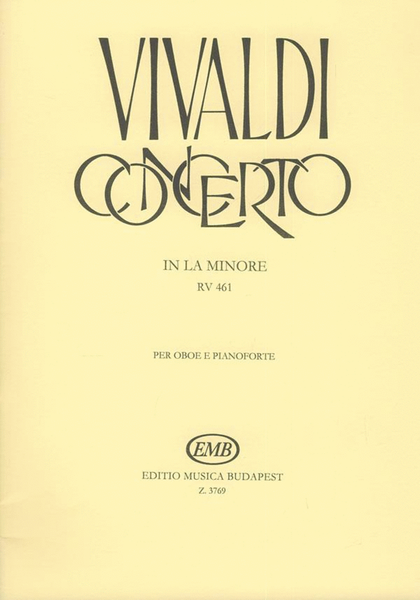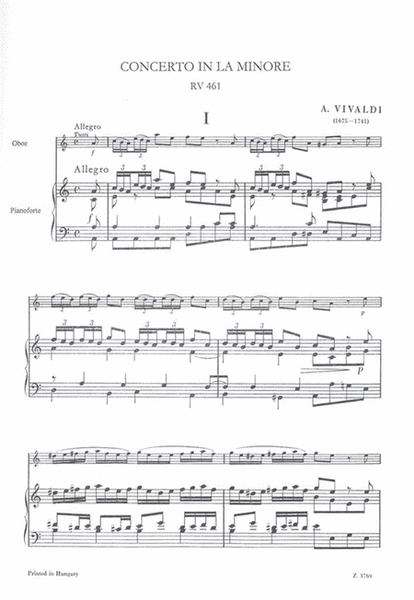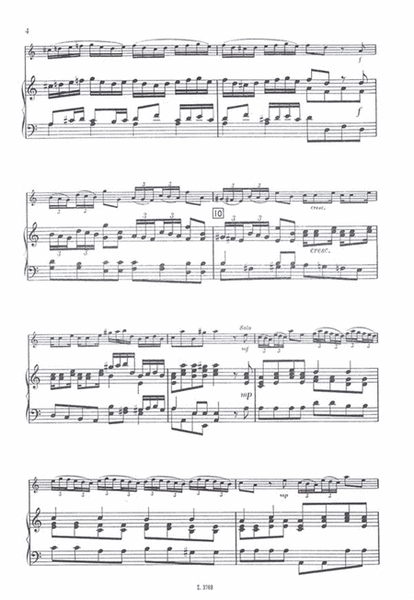Concerto in la minore per oboe, archi e cZalo RV
per oboe, archi e cembalo RV 461 (F.VII. No. 5, P.V. 42)
-
Ships in 2 to 3 weeks
Details
Description
SKU: BT.EMBZ3769
Per oboe, archi e cembalo RV 461 (F.VII. No. 5, P.V. 42). By Oliver Nagy. By Antonio Vivaldi, Oliver Nagy, and Tibor Szeszler. Book Only. Composed 1963. 28 pages. Editio Musica Budapest #EMBZ3769. Published by Editio Musica Budapest (BT.EMBZ3769).English-German-Hungarian.
The source of the present edition of the Oboe Concerto in A minor by Antonio Vivaldi is the Collected Works of Vivaldi, edited by Malipiero, published by Ricordi 1955. The title of the original score is "Concerto in La minore per oboe, archi e cembalo" the original setting: Oboe, Violini I-II, Viole, Violoncelli, Contrabassi and Cembalo. The arrangement for oboe and piano is kept in accurate conformity with the musical text of score, the continuo part - however - has been more freely adapted (of course within the possibilities of baroque style). The piano part contains the entire orchestral material in the Tutti-s, thus the soloist is not obliged to play all the Tutti parts.However, in Movement I and III the first and last Tutti may never be omitted by the performer.
Die Grundlage dieser Ausgabe des Oboenkonzertes in A-Moll von Antonio Vivaldi ist die von Malipiero redigierte Gesamtausgabe (Ricordi, 1955). Der Titel der Originalpartitur lautet: Concerto in La minore per oboe, archi e cembalo: die Besetzung ist folgende: Oboe, Violini I-II, Viole, Violoncelli, Contrabassi, Cembalo. Die Ausgabe für Oboe und Klavier ist dem Urtext der Partitur getreu, doch ist die Ausarbeitung des Continuos etwas freier behandelt (natürlich nur im Rahmen der vom Stil der Barockmusik gebotenen Möglichkeit). Die Klavierstimme enthält an den Tuttistellen das Stimmaterial des ganzen Orchesters: der Solist ist daher nicht verpflichtet, sämtliche Tuttimitzuspielen. (Im I. und III. Satz dürfen jedoch die ersten und letzten Tutti vom Solisten nicht weggelassen werden.



 Share
Share